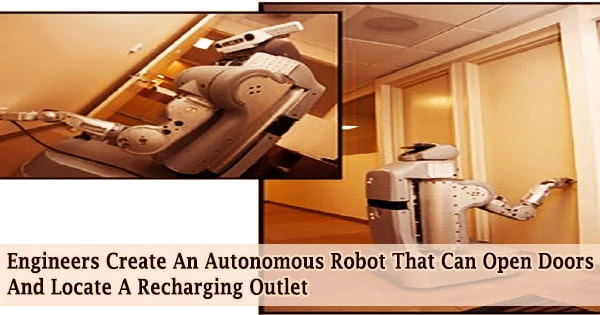The idea that robots would take over the world is flawed by the fact that the earth is full with doors. Doors, according to Ou Ma, an aerospace engineering professor at the University of Cincinnati, are kryptonite for robots.
“Robots can do many things, but if you want one to open a door by itself and go through the doorway, that’s a tremendous challenge,” Ma said.
Students at UC’s Intelligent Robotics and Autonomous Systems Laboratory used three-dimensional digital simulations to address this complicated problem. They’re now working on an autonomous robot that can not only open its own doors but also locate the nearest electric wall outlet to recharge without the need for human intervention.
For helper robots that sweep and sanitize office buildings, airports, and hospitals, this small step toward independence is a major step ahead. The $27 billion robotics sector, which comprises manufacturing and automation, includes helper robots.
The robot needs sufficient data or ‘experiences’ to help train it. This is a big challenge for other robotic applications using AI-based approaches for accomplishing real-world tasks.
Yufeng Sun
The study was published in the journal IEEE Access.
Yufeng Sun, the study’s lead author and a Ph.D. student in the UC College of Engineering and Applied Science, said other researchers have tackled the challenge by scanning an entire area to produce a 3D digital model so the robot can detect a door. However, this is a time-consuming unique method that only works for the specific room being scanned.
Sun said developing an autonomous robot to open a door for itself poses several challenges.
Doors come in a variety of colors and sizes, as well as handles that are slightly taller or lower. To overcome obstacles, robots must know how much force to apply to open doors. The majority of public doors are self-closing, so if the robot loses its grasp, it must restart.
Due to the use of machine learning by UC students, the robot must “teach” itself how to unlock a door through trial and error. This can take some time at first, but the robot corrects itself as it continues. Sun claims that simulations assist the robot to prepare for the actual work.
“The robot needs sufficient data or ‘experiences’ to help train it,” Sun said. “This is a big challenge for other robotic applications using AI-based approaches for accomplishing real-world tasks.”
Sun is now working with UC master’s student Sam King to turn Sun’s successful simulation study into a working robot.
“The challenge is how to transfer this learned control policy from simulation to reality, often referred to as a ‘Sim2Real’ problem,” Sun said.
According to Sun, digital simulations are often only 60% to 70% successful in their first real-world implementations. He estimates that bridging the gap will take a year or more in order to complete his new autonomous robots system.
So there’s still time to put money on robot-proof door locks.





